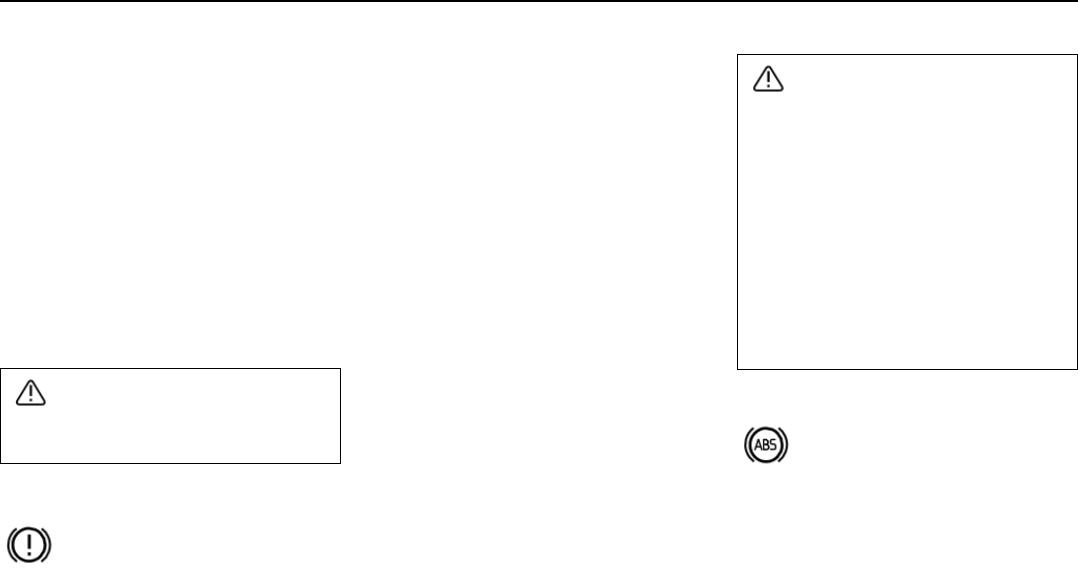
111
Starting and driving
Brake system
Brake servo
If the car is rolling or is being towed with the
engine turned off, the brake pedal must be
pressed about five times harder than when
the engine is running. If the brake pedal is
pressed when the engine is started, you will
feel the pedal drop. This is normal and due to
the brake servo becoming active. This may be
more noticeable if the car has emergency
brake assistance (EBA).
NOTE! If braking with the engine switched
off, press the brake pedal sharply once, not
repeatedly.
Brake circuits
This symbol lights if a brake circuit is
not working.
If a fault should occur in one of the
circuits, it is still possible to brake the car. The
brake pedal will travel further and may feel
softer than normal. Harder pressure on the
pedal is needed to produce the normal brak-
ing effect.
Dampness can affect braking
characteristics
Brake components become wet when the car
is driven in heavy rain, through pools of water
or when the car is washed. This may alter
brake pad friction characteristics so that
there is a delay before braking effect is
noticed.
Press the brake pedal lightly from time to time
if driving for long stretches in rain or slushy
snow, as well as after setting off in very damp
or cold weather. This warms up the braking
surfaces and dries off any water. It is also rec-
ommended to do this before parking the car
for a long period in such weather conditions.
If the brakes are used heavily
When driving in the Alps or other roads with
similar characteristics, the car’s brakes are
heavily loaded even if the brake pedal is not
being depressed especially hard.
Because speed is often low, the brakes are
not cooled as effectively as when driving on
flat roads at higher speed.
So as not to overload the brakes, shift down
when driving downhill instead of using the
foot brake. Use the same gear driving down-
hill as you would use driving uphill. This using
engine braking more efficiently and requires
the foot brake for only brief periods.
Bear in mind that driving with a trailer puts an
additional load on the car’s brakes.
Anti-lock braking system (ABS)
The ABS system (Anti-lock Braking
System) is designed so that the
wheels do not lock when braking.
This retains the best possible steer-
ing response when braking. This improves
your ability to swerve to avoid obstacles. The
ABS system does not increase your total
braking capacity. However, as the driver you
have increased ability to steer and thus better
control over the car, which in turn increases
safety.
WARNING!
The brake servo only works when the
engine is running.
WARNING!
If the BRAKE and ABS warning symbols
are lit at the same time, a fault may have
occurred in the brake system. If the level in
the brake fluid reservoir is normal, drive
carefully to the nearest authorised Volvo
workshop to have the brake system
checked.
If the brake fluid is under the MIN level in
the brake fluid reservoir, do not drive
further before topping up the brake fluid.
The reason for the loss of brake fluid must
be investigated.


















